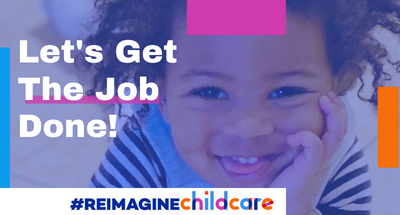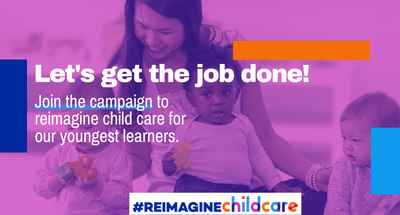Here's what you can do to keep the conversation going.
 Submit a post with a link to the editorial in your local Patch news outlet. Below are some sample posts. You can post your own op-ed as well. It's really easy!
Submit a post with a link to the editorial in your local Patch news outlet. Below are some sample posts. You can post your own op-ed as well. It's really easy!
Haven't posted in your local Patch before? If you have a profile in your local Patch, go to patch.com. Click on "neighborhood posts" on the menu bar. In the box where it says "Ask a question or share local news" copy and paste one of the two sample posts below. It's that easy!
Don't know your local Patch or haven't posted before? Go to patch.com. Enter your zip code and a list of local ones will appear. You will then have to sign up and create a profile. Then follow the steps above to post.
Sample #1
Can we afford not to invest in child care? There is a big gap in child care funding and services in New Jersey and parents, programs and the economy are feeling the pain. It’s time New Jersey ends the child care crisis. The $360M investment for babies is a step in that direction. #ReimagineChildCare with us and read an op-ed by Cecilia Zalkind, ACNJ President/CEO: https://www.nj.com/opinion/2022/04/can-new-jersey-afford-not-to-invest-360m-in-child-care-opinion.html
Sample #2
We still have work to do for babies - Governor Murphy's commitment to children has led to extraordinary advances, putting the state ahead of the rest of the country and most importantly, improving the lives and well-being of newborns and preschool-age children. But we are still missing the babies. #ReimagineChildCare with us and read an op-ed by Cecilia Zalkind, ACNJ President/CEO: https://www.nj.com/opinion/2022/04/can-new-jersey-afford-not-to-invest-360m-in-child-care-opinion.html
 Submit an op-ed in your local news outlets.
Submit an op-ed in your local news outlets.
Contact us and we will provide you with assistance.
 Share the op-ed with your network and help us keep the momentum going. Follow us on social media and share! (Pro-tip - Facebook groups are great for spreading the word!)
Share the op-ed with your network and help us keep the momentum going. Follow us on social media and share! (Pro-tip - Facebook groups are great for spreading the word!)


 Submit a post with a link to the editorial in your local Patch news outlet. Below are some sample posts. You can post your own op-ed as well. It's really easy!
Submit a post with a link to the editorial in your local Patch news outlet. Below are some sample posts. You can post your own op-ed as well. It's really easy! Submit an op-ed in your local news outlets.
Submit an op-ed in your local news outlets. Share the op-ed with your network and help us keep the momentum going. Follow us on social media and share! (Pro-tip - Facebook groups are great for spreading the word!)
Share the op-ed with your network and help us keep the momentum going. Follow us on social media and share! (Pro-tip - Facebook groups are great for spreading the word!)

